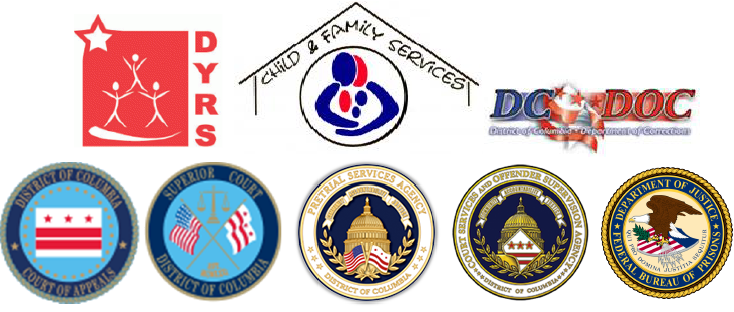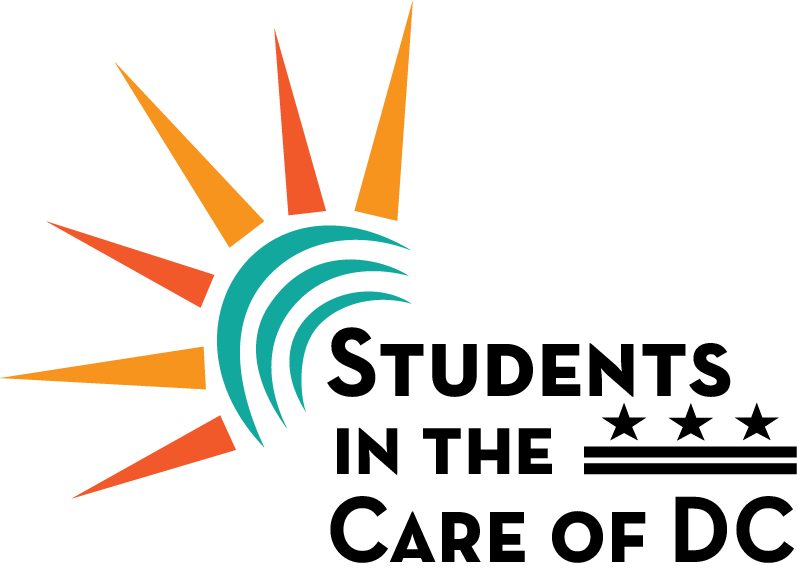The SCDC supports Mayor Muriel Bowser’s mission to serve youth and young adults who are under the care and custody of any of the following District of Columbia agencies:

Students Impacted by the Child Welfare System
For students impacted by the child welfare system, their involvement begins with a report of suspected child abuse or neglect that is currently occurring or at risk of occurring; one can find the District’s legal definitions on what constitutes as abuse or neglect here.
The Child and Families Services Agency (CFSA) is required to investigate all reports of child abuse and neglect and pending their investigation will determine the appropriate next steps. This could include CFSA’s Front Door approach, where the agency provides the child and family services within their own home. It could also include CFSA’s Temporary Safe Haven, where children are removed from the home and placed in foster care, such as in a foster home, kinship residence, or a group setting (group homes, independent living, residential treatment centers, etc.).
CFSA’s data dashboard provides quarterly updates on the number of young people and families entering their agency, with additional demographic factors (race, age, and Ward) also being identified. Further, the Office of the State Superintendent of Education (OSSE) also collects and tracks educational outcomes for students in the care of CFSA. More information on the joint responsibilities between OSSE and CFSA can be found here.
The work of the SCDC includes all young people in the care of CFSA both in the District and those who are out of state, predominately in Maryland and Virginia, as well. As of September 2020, there were approximately 695 children and 470 families being served in foster care.
Students Impacted by the Justice System
Students who come into contact with the justice system in the District of Columbia experience a complex process that includes both federal and local agencies. Our partners at the Public Defender Service (PDS) describe this process in detail. Students who come into contact with the justice system are both in the community and residential facilities.
In the Community:
Students may be awaiting trial, under the supervision of, or receiving services through any of the following agencies:
- Family Court Social Services Division (FCSSD),
- Court Services and Offender Supervision Agency (CSOSA), and
- Pretrial Services Agency for the District of Columbia (PSA).
Students may also be committed to the Department of Youth Rehabilitation Services (DYRS) and being monitored in the community either in a home placement, group home setting, or shelter home.
In Residential Facilities:
Some youth will be committed to the residential facility at DYRS's New Beginnings Youth Development Center, located in Laurel, MD, or at the shorter-term detention center called the Youth Services Center (YSC), at residential treatment facilities (RTCs), or psychiatric residential treatment facilities (PRTFs). Youth who are under 18 years of age and charged as adults—commonly referred to as “Title 16 Youth”— are also placed in the custody of DYRS at the YSC until their transfer into the adult system. Young adults between the ages of 18-22 who qualify for special education services under IDEA receive services through DCPS’ Inspiring Youth Program at the Department of Corrections (DOC).
DYRS publicly updates their data on youth who are detained and committed on a consistent basis. They also provide a breakdown of the types of placement for all of their youth who are committed in their FY 2019 Annual Report (see page 28).

Dual-Jacketed Students:
Unfortunately, there is an overlap of students who are justice system involved and child welfare system involved, who are commonly referred to as “dual-jacketed” or “crossover” youth. The 2018 SCDC Working Group Report (see pages 15-16) collected initial data from CSSD to see how many young people are involved, along with their specific dispositions, in both systems. These findings are a starting place, but a more coordinated effort across agencies and jurisdictions, including Maryland and Virginia, needs to occur to provide a more accurate picture.
See the Center for Juvenile Justice Reform at Georgetown University's new Crossover Youth infographic here.

